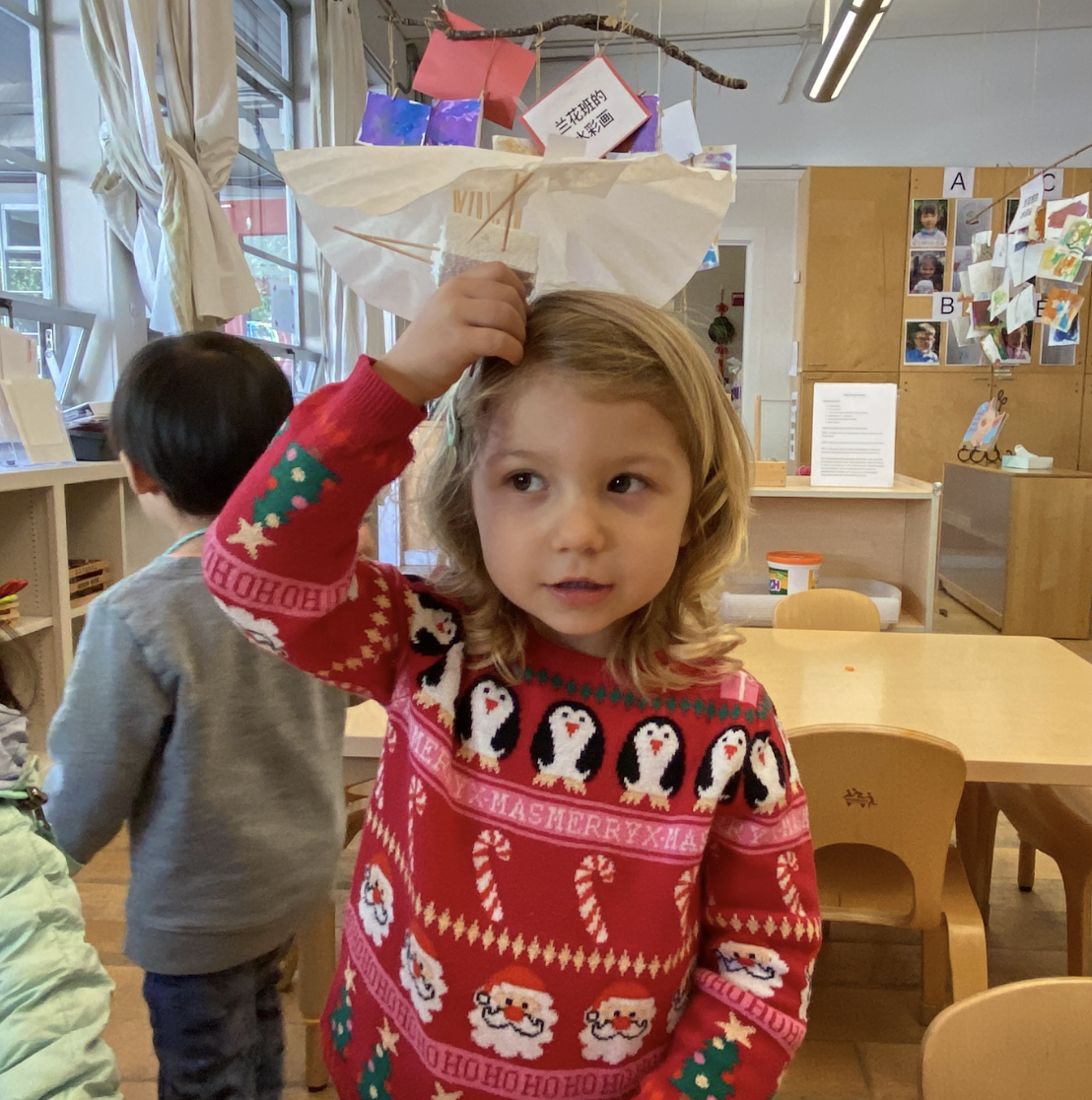The Umbrella Project
Something truly magical about preschool at PKS is how student curiosity can drive class exploration. In a Reggio Emilia inspired program, the curriculum isn’t established in advance of the class - it develops along with the students’ emerging interests. Students will become fascinated by something, ask more questions, and teachers will guide students on a learning journey that enables them to discover more about the topic they are interested in, even taking them into various subjects and down different lines of inquiry. Even in P2 when students are only 3-4 years old, they are full of wonder. This can lead to very interesting year-long studies that involve unexpected and organic learning opportunities, moments of interdisciplinary connection, and student driven discovery. Below, we will share an example of how a preschool project unfolds, by talking about a time when a classroom building activity, coupled with a very rainy winter, led to a yearlong study of umbrellas - so interesting!
The children in the P2 Orchid class loved using classroom pegs and building materials to make special structures. They liked to put long rods into connectors, and realized that it looks very much like an umbrella. This way of building became very popular in the Orchid class. They also got very excited when it rained, and loved using and sharing umbrellas. As a result, students began wondering and exploring how umbrellas are made! The class started making close observations of umbrellas. The practice of observing objects that are right in front of us, noticing details, shapes, colors, part-to-whole relationships, is an important foundation for scientific investigation, an essential inquiry learning skill.
One day, the teachers hung umbrellas in the classroom, and the students noticed them. During meeting time, students learned that an umbrella consists of three main parts: 伞柄 (sǎn bǐng, main shaft), 伞骨 (sǎn gǔ, ribs), and 伞面 (sǎn miàn, canopy). After learning about these parts, students made their first observational drawings of the umbrellas in the classroom.
Umbrella Observational Drawings - First Draft and Second Draft
According to the Reggio principle that learning is “one-inch wide and one-mile deep”, teachers encourage students to revisit their own work as well as give constructive feedback to each other. This in-depth work allows the children to deepen their observations, notice new details, make new connections, and improve their work, while learning how to support and encourage each other. So, after the first observational drawings, students and teachers reviewed the sketches. They noticed that a lot of the drawings only represented two parts of the umbrellas: either, just the canopy and ribs, or the canopy and main shaft. So during meeting time, the teachers asked, “What will happen if we only have the canopy and ribs?” Then the teacher walked around the classroom, holding only the canopy, and the orchid children all laughed. One student remarked, “可以当成帽子 (you can make it into a hat)!” After this, the children realized that their umbrellas should also include the main shaft, or they could make an umbrella hat!
However, the class made an observation that if the umbrella only has a canopy and main shaft, the umbrellas will not be able to open, because the ribs are like the bones in the body. Without bones, we cannot stand up. It was impressive to see the children make this connection between the human body and the umbrella. It shows they are able to understand the world as a work of different systems that support and overlap with each other. As a result, the Orchid children understood that it is crucial for an umbrella to have all three parts: the ribs, the main shaft, and a canopy.
Creating 3D Umbrellas
After this series of two dimensional explorations, the Orchid children were ready to start exploring how to make an umbrella with 3D materials. Some children preferred making umbrellas with a traditional look, and others experimented with different approaches, like with horizontal handles or umbrella hats.
The teachers offered a wide range of materials that had the potential of supporting their ideas and blueprints of what an umbrella should look like and how it should be built. The first time the class constructed umbrellas, they used coffee filters, foam, skewer sticks, and tape. The second time they used construction paper, along with popsicle sticks for the canopy. They learned that the ribs should evenly divide the umbrella canopy - leading to the question, “What does it mean to divide evenly?” They learned more about this concept, and practiced it, by evenly dividing and cutting pizzas! They also learned that you can fold construction paper 4 times to divide it evenly.
During the second iteration, students glued popsicle sticks on the lines they created when folding the paper. They then hammered the skewer sticks into a wine cork, which functioned as the umbrella’s “top notch,” holding everything in place.
When Life Brings You An Umbrella…
In emerging projects, there is always the opportunity to make real life connections and bring in events that can further the learning in an authentic way. One day, a teacher’s personal umbrella broke on the way to school. She brought it to the class, so the children used it as an opportunity to take their investigation a step further. They took the umbrella apart to see what an actual metal rain resistant umbrella looks like inside - fascinating!
But after investigating, what would happen to the broken umbrella? We don’t want to throw away good materials! So Christie Laoshi sewed the canopy into a skirt/poncho for students to use and wear in their dramatic play area - so creative!
Students had now explored the mechanics of umbrellas, experienced first hand construction of the apparatus, and even seen how you can repurpose a broken umbrella. But another question emerged…“Where does the rain go?”.
This opened up an opportunity for students to learn more and deepen their understanding about rain. They learned that rain is created from water evaporation - but what is water evaporation? To explore this question, students needed to learn about the three different forms of water: water, ice and steam.
Throughout the year, students were able to continue branching off of their original topic and exploring various tangential interests, like they did with upcycling usable materials or diving into weather systems.
Culminating Event - Including Our Families
During our May Learning Celebration, when we reflected back on the learning and growth of our students over the course of the year, we invited the class families so we could share our project journey. We also wanted the children to team up with their parents and to create a set of individual umbrellas using special materials that the teachers and children selected together. We were surprised by how creative the children were, and how the parents reported to be inspired by the children’s energy.
Learning Highlights
While elementary and middle school’s projects tend to be more normed and structured, with more pre-established outcomes and metrics of success, this project helps us see that preschoolers are able to have just as rich an experience that can even be born from a simple observation such as “these rods and connectors resemble an umbrella!” This requires teachers to be active listeners and observers of the students, anticipate and project the potential that a topic has in order to engage students, and to foster that interest through various activities offered. Throughout the Umbrella investigation, children learned that they are capable engineers and artists, they acquired an incredible amount of Mandarin vocabulary related to hands-on exploration of materials, as well as scientific vocabulary related to the physics of what an umbrella is made of and how it works, and they learned how to ask questions and work with each other supportively. It’s incredible how deep the learning can be when students are given the space and guidance to explore for themselves.















